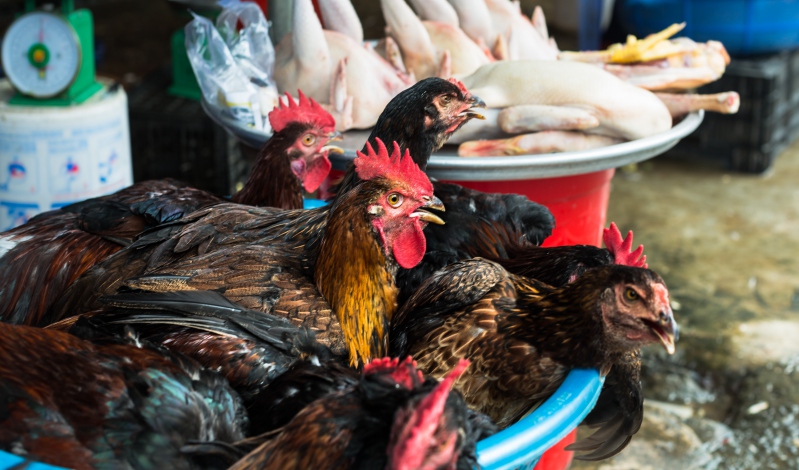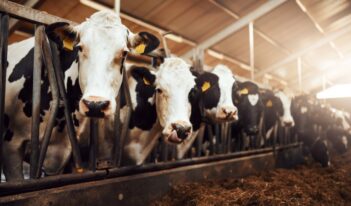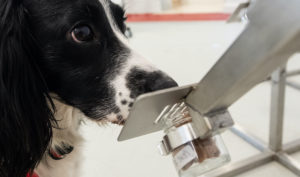
Scholar argues for increased monitoring and regulatory coordination to curb zoonotic disease spread.
What do wildlife trade regulation and the future of the human race have in common?
It turns out, a lot.
Unless nations around the world take aggressive steps to regulate the trade and sale of live animals, future pandemics will threaten human existence, argues security expert Vanda Felbab-Brown in a Brookings Institution report.
Recent data indicate that a majority of new diseases are zoonotic—passed from animal to human. The booming trade of live animals across international borders creates the perfect environment for zoonotic disease spread.
The COVID-19 pandemic brought the seriousness of zoonotic disease into the spotlight. Many reports trace the first known cases of the disease among humans to a live animal market in Wuhan, China, where over 100 live animal species were bought and sold.
Some open air markets of this nature pose high rates of disease transmission due to the lack of hygienic measures and the stress on confined animals. High stress on animals can cause compromised immune systems—an ideal condition for maximizing disease spread.
The live animal trade is no small industry, as 189 nations exported over 11 million animals from 2012 to 2016. China represents about 58 percent of this global trade while high-income countries such as the United States lead the world in imports.
To combat future zoonotic pandemics occurring along these trade routes, Felbab-Brown advocates bold regulation focused on increased monitoring of the live animal trade and greater international coordination among regulatory bodies.
Since COVID-19 proliferated around the world last March, China has responded with significant regulatory measures, Felbab-Brown explains. China banned the commercial buying and selling of wild animal meat, and it closed many markets selling live animals. Many municipal regulations go even further, imposing heavy fines for violating these restrictions and owning wild animals as pets.
Felbab-Brown urges the United States to follow China’s lead by requiring stricter health inspections for live animals upon entry at the border. Currently, the Centers for Disease Control and Prevention regulates only imported wildlife that is known to impact public health significantly. No specific federal agency, however, is responsible for leading the screening and monitoring process of live animals crossing U.S. borders.
This gap must be filled, Felbab-Brown argues. Inspectors only examine a few of the millions of live animals entering the United States every year for dangerous pathogens. The United States and other nations should adopt more robust “pro-active pathogen monitoring” processes that include surveillance for zoonotic diseases, Felbab-Brown argues.
Such surveillance should not be mistaken for outright bans. Banning trade in wildlife, however, is not the answer to pandemic prevention, Felbab-Brown urges. Such a strategy is politically infeasible and would have dire consequences. It would eliminate incentives for cooperation between nations on matters involving saving threatened ecosystems and may lead to poverty among people who depend on hunting and trading for their livelihood.
Blanket bans may also exacerbate existing trade risks and push the trade of wild animals underground where hygienic rules are even less stringent and disease monitoring would be all but absent. Bans in certain countries may also merely shift illicit trade routes to other nations instead of reducing the global demand for certain live animals that pose high health risks.
In September of last year, members of the U.S. Senate signaled they were paying attention to this matter. Senators John Cornyn (R-Texas) and Cory Booker (D-N.J.) introduced the Preventing Future Pandemics Act of 2020. This bill would “prohibit the import, export, and domestic trade of live terrestrial wildlife for the purpose of human consumption,” and it would “facilitate international cooperation by working with international partners and through intergovernmental, international, and nongovernmental organizations such as the United Nations.” Senator Cornyn reintroduced the bill this session, but the measure has sat in committee since January 2021.
International cooperation and coordination among global regulatory bodies is key, Felbab-Brown notes. She highlights the Convention on International Trade in Endangered Species of Wild Fauna and Flora, the World Health Organization, the U.N. Office on Drugs and Crimes, and the U.N. Environment Programme as bodies that have historically overlooked issues related to pandemic prevention and management.
These bodies should work with regional organizations and international financial institutions such as the Association of Southeast Asian Nations (ASEAN), the World Bank, and the International Monetary Fund to align priorities and generate funding for these pandemic measures, suggests Felbab-Brown.
Regional organizations such as ASEAN have already played a major role in promoting stronger environmental regulations across Southeast Asia since the 2002 SARS outbreak. Greater investment by international financial institutions would expand the reach of these conservation efforts globally, Felbab-Brown argues.
COVID-19 is not humanity’s first dance with zoonotic disease spread—HIV/AIDS, Ebola, and the flu all began through passage from animals to humans. These and other zoonotic diseases continue to cause millions of deaths per year.
“Severe threats to human health are often the best motivators for environmental regulations,” Felbab-Brown notes. But she fears that, unless nations around the world act quickly to unify their fragmented zoonotic disease monitoring and wildlife trade regulations, the next zoonotic pandemic is imminent.



